2023 या वर्षी साधना साप्ताहिकाच्या वतीने दिलेल्या तांबे-रायमाने अभ्यासवृत्तीतून आलेल्या तिघांचे व यदुनाथ थत्ते अभ्यासवृत्तीतून आलेल्या तिघांचे, असे एकूण सहा जणांचे लेखन प्रसिद्ध करीत आहोत. त्यापैकी विवेक वाघे, प्रतिक राऊत व विकास वाळके या तिघांचे दीर्घ लेख, साधनाच्या 13 जानेवारी 2024 च्या विशेषांकात प्रसिद्ध झाले आहेत. (याच अंकांच्या संपादकीयात या अभ्यासवृत्तीची संपूर्ण प्रक्रिया सविस्तर मांडली आहे, येथे क्लिक करून ते वाचता येईल.) तर अविनाश पोईनकर, वैभव वाळुंज आणि प्रिया अक्कर व नेहा राणे (दोंघीनी संयुक्त लिहिलेला) यांचे तीन दीर्घ लेख प्रत्येकी तीन किंवा चार भागांत ‘कर्तव्य साधना’वरून प्रसिद्ध करीत आहेत. त्यापैकी हा तिसरा लेख सलग चार भागांत देत आहोत..
Background of the study
Understanding the data sources of the co-operative societies to recognise them in policy-making was the heart of the inquiry of this study. In order to select the societies for our study we conducted primary field visits to a total of 5 societies and narrowed down our scope of study to three consecutive financial years- 2019-20, 2020-21, 2021-22 of two Fishers co-operative societies. Along with the in-depth interviews of 4 board members and president of Akhil Maharashtra Machhimar Kruti Samiti-Devendra Tandel we also benefited from the expertise of Dr. Neeraj Hatekar and Dr. Amalendu Jyotishi. The secondary data referred for this study includes Coastal Government Resolutions passed by Maharashtra Government and Bombay Municipal Corporation.
Each of these years marks a significant political, administrative, and social event parallelly happening and influencing the functioning of society, for example, the increased frequency of cyclones in the year 2019, the pandemic and 2 consecutive lockdowns in 2020 and 2021, resistance of fishers on account of Vadhvan port and Coastal Road, the compensation policies in 2022, the amendments in CRZ and many more. We made an informed decision for this piece to specifically focus on the data points relevant to the policies that the annual reports revealed to us in order to not derail from the core inquiry of this article.
Bhati, being a relatively new society, is enthusiastic and innovative in its approach and therefore was a great fit for our study. The society consists of all traditional fishers with a young body of board members and an increasing number of youths in the fishing occupation. Society has made incredible progress over the past 40 years while also contributing to developing the relatively new Bhati village.
Whereas Madh is an elderly society established 72 years ago. This society too consist of all traditional fishers with an experienced body of board members leading and guiding neighbouring societies by undertaking projects like reconstruction of Talapsha Jetty-used by nearby Koliwadas to park their boats in monsoon. This society co-exists with three more fisher’s co-operatives in Madh, where Madh Machhimar Vividh karyakari Sahakari Society ltd is the most senior one. It also happens to be the parent organisation of Bhati because Bhati and its villagers were earlier part of Madh village and the fishers were the members of Madh’s society. They separated to form their own society only when it became difficult for the Bhati fishers to transport their daily material requirements from Madh. Both the organisations share a healthy relation and support each other to grow.
To begin with the main document of our study, we have identified inventory of items from the financial statements of 3 years disclose the important data sets documented and preserved by the societies for the last 40 and 72 years. These data sets can play a significant role in policy-making by providing- current and historic data on fishers and fishing, identifying the cost and income of the fishers to formulate compensation amounts and welfare schemes for the growth of the fishing industry, and the needs and challenges of fishers in quantitative formats.
Financial Statements
The financial statement of Bhati Co-operative Society is presented in three statements namely; Trade Profit and Loss statement, Transportation Profit and Loss Statement and Market Profit and Loss statements which are then consolidated into Main Profit and Loss statement, and the Net profit/loss from the Main P&L statement is then carried down into the Balance sheet of the organisation. In case of Madh’s Society an additional Ice factory Profit and Loss statement form part of the financial statement as production and sale of Ice is also their source of Income apart from fish.
Here is a brief glance at the financial statements :
- Trade Profit and Loss Statement- This statement consist of all the operational costs and incomes of the society through the purchase, sale, and stock of Industrial goods directly required for the day-to-day operations of the fishing business of the members at affordable rates. This statement provides us with the list of basic operational items required by fishers daily.
- Transportation Profit and Loss Statement- This statement presents the income and expenses incurred on account of transportation of the goods required by the society for its members.
- Market Department Profit and Loss statement- The market department of the society is responsible for the marketing needs of the member fishers including women fishers. Both co-operative societies have booked its own space with the Bombay Municipal Corporation called ‘Pedhi’ (पेढी) at the Malad Sainath Market to facilitate the sale of fish and in order to eradicate the role of the middleman and help fishers earn the right value for the products. Since Madh’s co-operative society also has its own Ice factory, they also conduct sale of Ice at Talapsha Jetty. The society has its own employees at the markets to support fisherwomen in conducting their business. The Market department accounts for the highest profit amongst all the departments and therefore plays the most important role in the functioning of society. The market department's profit is also allocated towards reserved funds for infrastructural and cultural activities of the village and society.
- Ice Factory and Cold Storage Profit and Loss Statement- Only Madh’s Co-operative society has its own Ice factory and Bhati is dependent on Madh for its Ice supply. The Ice purchase of Bhati comes under its Trade Profit and loss statement and for Madh it comes under Ice factory department.
- Main Profit and Loss Statement- As stated earlier, all the above departments converge into the Main department to arrive at the annual profit of the society. The main department consists of all the other co-operatives expenses not covered by the above department. These interesting items in the financial statements of the Main department give us a peak at all the activities the co-operative society does for the members as well as for the development of the villages as whole.
The main department stands out as the most interesting department data-wise because it gives us a peak into the involvement of society in diverse allied and cultural activities for the welfare of the fisher communities.
Balance sheet:
Number of members, capital, provisions, loans, and assets data of the Balance sheet provides a brief glance at the activities and data sources of the co-operative societies. Analysis of most of the provisions in Balance sheet is covered in the above profit and loss statements and therefore asset holdings and capital remain the important section left to be discussed from the statements. The items of the Balance sheet that are not already covered above are stated below:
- Liabilities
-Authorised Capital
-Share Capital
-Reserves and funds; Reserve fund, Dividend equaliser fund, Charity fund, Cost fluctuation fund, Special emergency fund, fishing literature and dissemination fund, Education fund, Honorarium fund, Training funds, Fisher’s disaster fund, welfare fund
-Loans; NCDC loan, government grants, boat accident, organisation education trip
-Provisions; Society Vishram Dham, Market cabin repair, Godown, Ex-gratia
- Assets
-Bank balances
-Fixed Deposit
-Investment in shares; Gorai Co-operative bank, Mumbai District Fishers Association, Maharashtra Fishers Association,
-Assets; 2 Jeeps, Tavera, Shed, Cabin, Office Building, Crusher machine, Cold storage house, Boring, Government land, Talapsha Jetty, Godown
-Outstanding and Advance balances; Debtors, Members loans, Employee advance, Indian Oil Corp Ltd advance.
-Deposits; Garware Technical Fibre ltd, Mumbai District Fishers Association, Maharashtra Fishers Association, Bombay Municipal Corporation, Reliance energy (electricity),
The Balance sheet majorly provides us with the list of stakeholders associated with the co-operative society, which shows the vast scope of their interventions with the community.
Data Analysis
The data sources identified from the financial statements of 3 consecutive years of these 2 co-operative societies of Bhati and Madh Koliwadas can be classified as under:
Data of Members:
As we discussed earlier, each of the societies have around 800 members and their shares in the society. Almost all the members are either fishers or fish vendors. Many times, the fish vendor women and the fisherman from the same household are members of the same society. The society takes care of the needs of both boat owners and the market vendors.
“We have their total records; Adhar card, annual income everything. We do not have information of their properties because nobody in our village has 7/12. None of the gaothan from here to sasoon dock has 7/12. So now we are demanding the govt to allot the place of our villages in our names. Our Gaothan is older than CRZ so those rules are not applicable to us.” -Bhati Co-operative Society’s Chairman, Rajiv Duming
If we look at the Annual reports of the Bhati’s society, we understand that the society has records of Boats with its license numbers, Insurance details of the members and their household data to a certain extent. The number of members in Bhati are increasing each year. On talking to the Chairman of Bhati, we got to know that new youth are still joining the occupation, building new boats, and continuing the family business inherited by them. Study of these number of members also shows us there are considerable fishers engaged in traditional fishing in Mumbai Suburbs.
Boat insurance is a mandatory part of Vehicle (Boat) Registration and license for fishers. But many times, fishers find it difficult to afford the insurance premium and therefore end up buying cheap insurance which do not fully cover the cost of damage in case of accidents. Therefore, Bhati’s society has started to buy insurance for boat owners to safeguard their boat property and Madh has been following up with local MLA’s and fisheries department to provide subsidy in the boat insurance premium.
Our enquiry into the reason for settling for insurance led us to the realisation that these insurances are purchased as it is mandatory for boats to be insured to claim diesel subsidy. During our conversation with the staff members of Madh we found out that the insurance cover provided for boats of approximately 40-50 lacs is abysmally low. The society committee of Madh co-operative society had also proposed to design their own insurance scheme which was not approved by the government. This scheme rested on the fact that the insured amount needed to cover the loss was higher than the amount offered by the insurance provider. The Madh Co-operative members also shared their experience of losses faced by them during Tauktae cyclone and how the insurance claim offered to them was insufficient. In case of Tauktae cyclone the co-operative society intervened and ensured that the members’ claims were disbursed by the company. 
Data of fish workers (directly engaged in fishing, working on allied activities)
One of the criticisms on the compensation policies and government schemes is that they fail to include the workers employed by the fishers on their boats and for other allied activities. For e.g., the Government Resolution for Tauktae, Maha and Kyarr cyclones identified boat owners and categorised them but both the GRs did not give any relief to the fish workers. This is where the data of labourers with the co-operative societies can be useful to demonstrate the huge number of boat and non-boat labourers employed in the fishing industry.
The special feature of the Bhati Co-operative society is that they have taken an interest in the well-being of the labourers by providing them with insurance and id-cards. This documentation can give us data related to the Khalashis and non-boat labourers employed in the fishing industry which remains largely missing with the government and other co-operative societies. The society identifies all its staff including daily wagers starting from the office cleaners. Moreover, it provides id-cards to the labourers employed by the boat owners and fisherwomen engaged in fish drying activities also. These labourers do not have any scope to become members of the society but their registration is renewed on a yearly basis. The documentation of Khalashis does not only help us identify them as a stakeholder group but also play a role as a cost variable in determining cost factor for traditional fishers.
The insurance is drawn by the Bhati’s society for all the employees of the society and labourers working on and off the boats in fishing occupation through a government insurance scheme. They collect necessary documents from the workers and submit to the fisheries department to ensure protection of the Khalashis and non-boat workers. This particular insurance scheme, can only be run through society. The list and details of employees submitted by society is a sufficient proof of employment for the government. Many such schemes show that the government is also dependent on society for the implementation of their projects. This data collected by society to comply with such schemes can play a major role in understanding the wide scope and potential of employment in the fishing industry and identifying them as a category eligible for compensation in case of development projects or calamities.
Short term loans for day-to-day operations are an interesting initiative by the Bhati’s co-operative society for fishers. This initiative indicates the nuances of fishing occupation that the co-operative societies hold. Earlier, NCDC was lending money for boat and net making but those schemes did not work out very well. Taking lesson from the loan management of co-operative society by referring to their cash flows and recovery techniques can be a good project for the fisheries department to undertake.
“Our business runs on credit basis. Like for manure fish we sort it, dry it, and then sell it to the traders but we get the money only after 3-4 months. So, to begin our business we give them Rs. 40000 production loan to enable them to pay for diesel and ice. And the other loan is for nets. We provide them 2 fishing nets for each boat. They can pay 50% now and 50% later. It buys them time. It takes 1.25 lakhs to make one net and 2.5 lakhs to make 2 nets. So, we tell them to pay 1.25L now and the 1.25L after 6 to 8 months. They can either pay it in instalments or lump sum. They sell their fish through our ‘Pedhi’ so they instruct us to pay off the loan from the sale amount and give them the rest of the amount. Almost all the members take this loan. This is not part of any government scheme; we do it at our level.” -Bhati Coop Chairman, Rajiv Duming
Another important data that the co-operatives are capable of providing is the GPS location of their fishing spots in the sea. Each fisher has a fishing pillar erected in the sea used to attach nets called as ‘Saj’ (सज) or ‘Kav’ (कव). The Bhati’s Co-operative society is trying to collect data of all the Saj but they have recorded only 10% of their fishing spots till now. This data is especially important to claim and spot the fishing areas at times of establishing customary rights in case of development projects.
“We have GPS locations of our boats. We do it in group of 10-11 people. All the 11 boats will go together and 1 boat will come back with the catch of all the boats. We have books of GPS points. We know our numbers by heart. Everyone knows each other’s ‘kav’. Like if I say ‘0,3’ that means this point is near worli sea link” -Rajiv Duming
The Madh society also maintains data of all the Nakhwas and their boats. It is mandatory for the co-operative societies to maintain the record of Khalashis on each boat. These records contain their photo ids, current address proof and a recent photograph. The society updates this information for each Khalashi every year. The reason for this we were told could be attributed to security threats after 26/11 Mumbai attacks.
Madh Co-operative Society provides operational loans for dole nets on a credit basis. The dole nets typically cost above 1,50,000 rupees, which can be difficult to bear for a boatowner before the beginning of the season. In such a scenario, society gives credit for nets in the range of 50-60% for a period of 30-45-60 days. On the issue of bad debt, we were informed that there are very rare incidents of bad debts as the members value their relation with the co-operative society and in order to maintain that the credit is usually returned on time.
Data of fisherwomen
In 2023, BMC distributed iceboxes to the women fishers to utilise the balance remaining at the end of the year in their gender budget. But a common complaint across Koliwadas of Mumbai was that the women fishers have been distributed with Iceboxes multiple times before and currently their needs are far from what they are handed over. There has been long-standing demand of women fish vendors at various fish markets for public toilets and water facilities. But the schemes of BMC for women have time and again showed the insufficiency of data regarding women fishers. One of the important reasons behind this is that not all women fishers have fishers or vending license. Women fishers are not even registered at fisheries department as fishers because it is difficult to track them down which is why, their business and fishing is often overlooked.
Therefore, the most important aspect of the market departments of these societies is that the individual enterprises are headed by the women fishers. Currently, the society is men-oriented and there is a need of a radical shift in perspective and the objectives of the society and the market department, whose major stakeholders are women has the potential to bring this shift in society and therefore in policies too. This study has shown us that the study of market departments of all the market-running societies can help us in extracting data in the relatively under researched sector of women fish vendors and women fishers.
Both the societies work with women closely through the market and therefore have identified and acted upon some of the needs of women fishers. For e.g., Bhati has identified the widowed and destitute women of the village to run a welfare scheme at their level. A permanent provision for widow and destitute women has been added to the financial statement of Bhati, which distributes Rs.5000 annually to the women in this category.
Bhati has also built a fish drying platform in the village to facilitate the occupation of fish dryers-who are majorly women. A proposal for another fish-drying platform is also in the pipeline. This shows that society does not only notice the need of fresh fish vendors but is also mindful of fish dryers, which is a very neglected category of fisherwomen. The societies data regarding number of women using the platform, details regarding the need of another platform are the data sources for government to record the data of women and design welfare scheme for them which is beyond the tradition of distributing iceboxes.
One of the most striking schemes run by the Madh Co-operative is Daily Saving Scheme in which members save a certain amount from their daily sell throughout the year. The amount is distributed in June/July right before the fish ban season. Receipts are given to members indicating their daily saving amount. The receipts are to be submitted to the co-operative when the amount is needed and then the amount is liquidated accordingly. This scheme follows the model of daily collection. In case of emergency money can be withdrawn before a year. Instead of interest gifts are given. For e.g., few years back 1-2 gm gold coins were given as gift. Every year committee selects the gifts to be given to the members of this scheme. As the money is collected daily and can be required in case of emergency it cannot be reinvested as FDs by the co-operative and hence interest cannot be given so gifts are decided by the committee members as we were informed by the staff. As majority of the fish sellers engaged in fish selling are women and hence, they are the ones investing primarily in this scheme. A staff member of the co-operative told us, ‘They (women) go for selling hence they can save.’ Hence there is a higher participation of women as compared to men. The co-operative has observed that there is a good response because a large chunk of money is guaranteed during the fish ban season which can be utilized either for the household or as investment for the next season.
Such initiatives not only highlight the needs of the community but also show the collective consciousness of the village through society. These schemes along with the data of women, their fishing methods, incomes, and production costs available with the society can provide experience-based guidelines to the government for the design of programs for empowerment of fisherwomen.
Priyanka Akkar
priyaakkar@gmail.com
Neha Rane
nrane1507@gmail.com
Tags: सहकारी संस्था मत्स्य व्यवसाय रिपोर्ताज नेहा राणे प्रियांका अक्कर तांबे रायमाने अभ्यासवृत्ती मच्छिमार कृती समिती Load More Tags

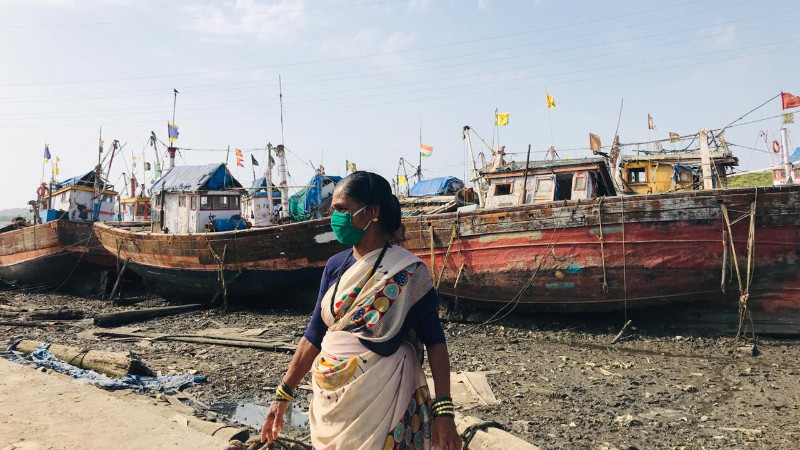

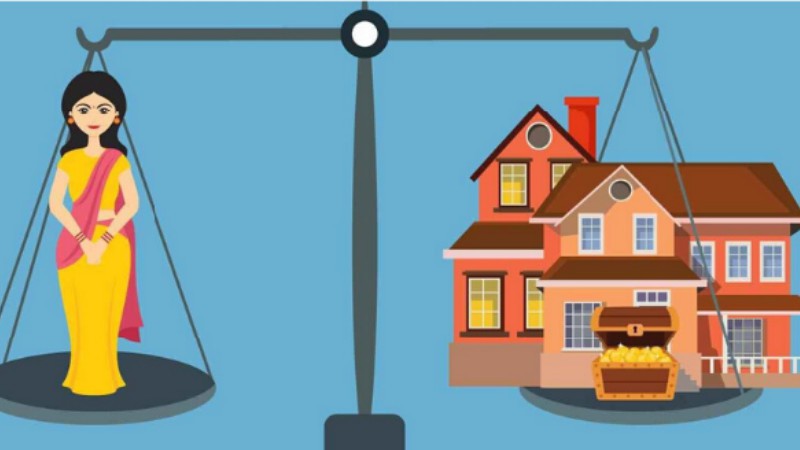

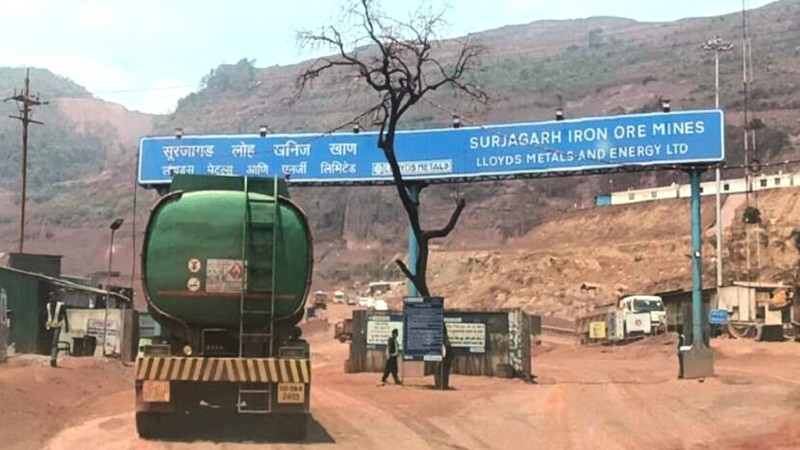
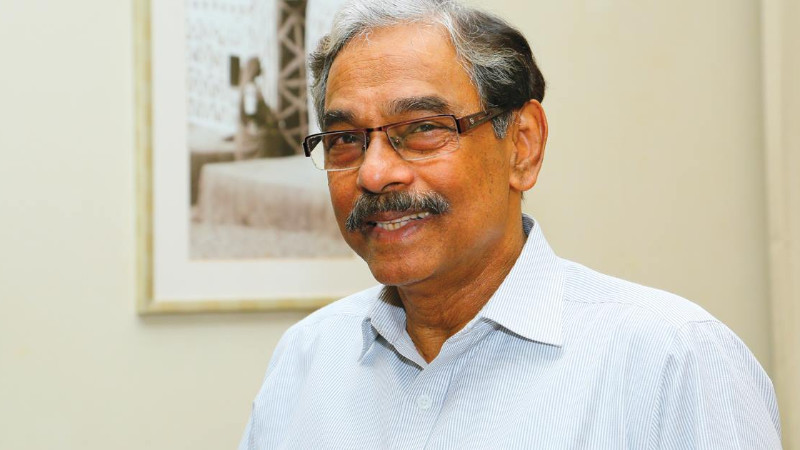
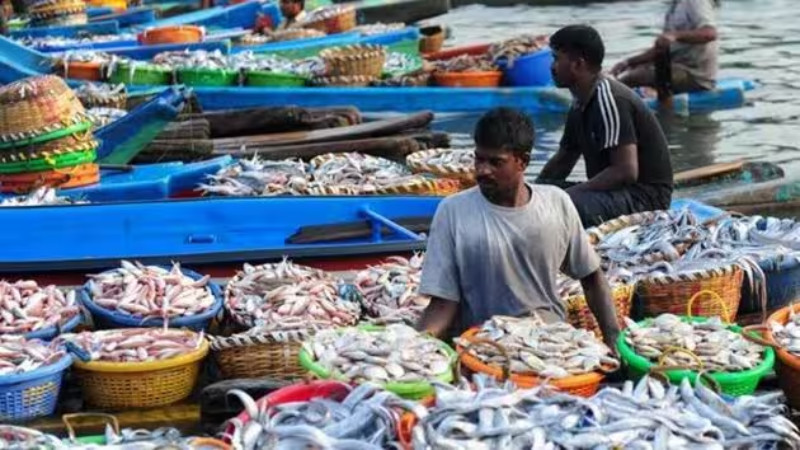
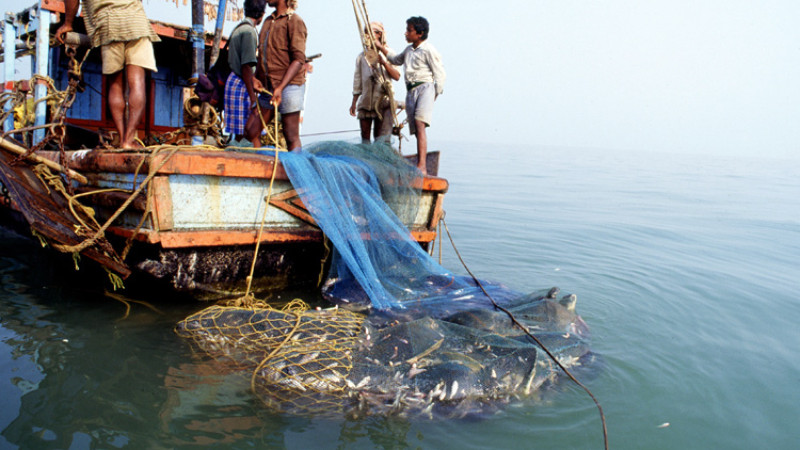
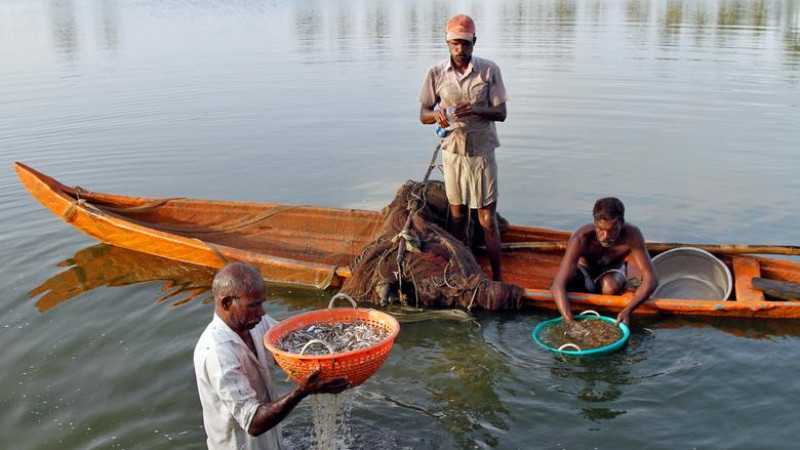

























Add Comment